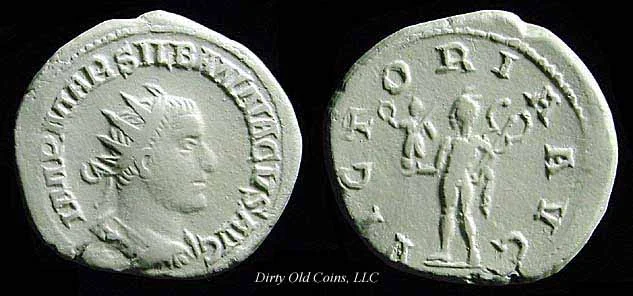The Roman Empire was ancient Rome’s post-Republican period. It was a state with extensive territorial holdings in Europe, North Africa, and Western Asia, controlled by emperors, around the Mediterranean Sea. But did you know there was a Roman Emperor who went unnoticed?
Silbannacus was a Roman Emperor whose existence had been completely forgotten until 1931 when two coins bearing his name were found.
Who is Silbannacus?
Silbannacus was an obscure Roman emperor or usurper during the Third Century Crisis. Silbannacus is not mentioned in any contemporary documents, and his existence was forgotten until the twentieth century, when two coins bearing his name, the first in the 1930s and the second in the 1980s, were discovered. His unusual name suggests that he could have been of Gallic or northern Italian ancestry. (Source: DBpedia)
Silbannacus’ Legitimacy as Emperor of Rome
The style of Silbannacus’ second coin appears to be a copy of the design used on the coins of Emperor Aemilian, implying that Silbannacus ruled after Philip, possibly during Aemilian’s brief reign. The bust of Silbannacus on the coin, as well as the legend marti propvgt, are particularly reminiscent of Aemilian’s coins. The similarity could imply that the coins were made in the same mint, implying that Silbannacus briefly controlled the mint in the imperial capital.
253 was a tumultuous year, and many of the events that occurred are obscure due to a lack of surviving sources. Trebonianus Gallus was Aemilian’s predecessor, and Aemilian was proclaimed emperor by his troops after defeating the Goths on the Danube. Gallus dispatched the general Valerian to defeat the usurper, but Aemilian arrived in Italy quickly and deposed Gallus. Aemilian’s reign would be cut short within weeks when Valerian rose against him.
Aemilian left Rome to fight Valerian but was assassinated by his soldiers before the battle could begin. Because the features of the second coin resemble those of coins minted in Rome, it is possible that Silbannacus was not a Gaulish usurper, but a briefly reigning ruler of the Roman capital.
According to British historian Kevin Butcher, one possibility is that Silbannacus was an Aemilian officer who, after Aemilian’s death, secured Rome and attempted to rally against Valerian. If this is correct, Silbannacus would have been defeated because Valerian seized control of Rome shortly after Aemilian’s death. The fact that both of Silbannacus’ coins have been discovered in Gaul does not invalidate the idea that he ruled in Rome: currency moved around the empire, and there is a traceable line of movement of coins from the capital to the Rhine border.
Before the suggestion that the first coin was minted in Gaul, Mattingly had written that it was similar to the coins produced in Rome for Philip the Arab. Silbannacus may be considered a legitimate, albeit ephemeral, emperor rather than a failed usurper if he ruled the capital, which would necessitate the support of the Roman Senate. Some historians, including Estiot, who published the second coin, and the German historian Udo Hartmann, believe Silbannacus was a Roman ruler. (Source: History Extra)
